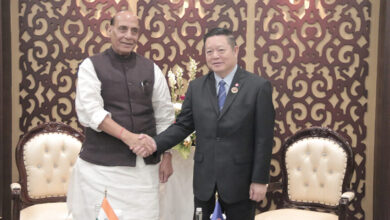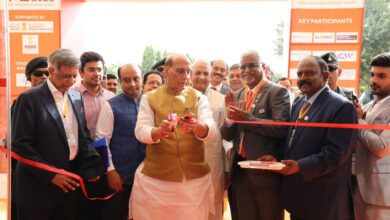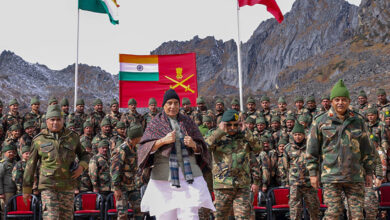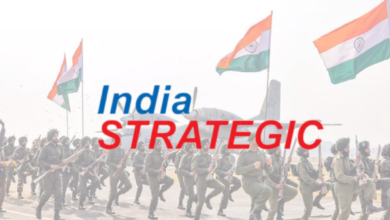Kamov Ka-226T
The JV of Rostec, Russia, with HAL, to manufacture Kamov choppers in India is a real shot in the arm for Make in India initiative of Prime Minister Narendra Modi in the defence sector. Reliance had also pitched in as the prime agency for integration for this LUH (Light Utility Helicopters). However, HAL clinched the deal, largely because of its long years of association with Russia with license agreements since 1963 for Mig-21. Su- 30 has been India’s real comrade in arms in the fourth generation plus fighter aircraft space. Many major private sector players like M&M, Tatas and L&T feel understandably peeved by the historical injustice done to private sector players, as they were not being provided a level playing field in technology transfer and platform integration; with Defence PSUs and Ordnance factories as favorite captive monopoly suppliers to the defence services with cost, delivery and quality inefficiencies. Notwithstanding, the year 2001 was a watershed for the private sector as it ensured 100 per cent participation in the defence sector for them with 26 per cent FDI. Last year witnessed a further increase in FDI cap to 49 per cent and the offset procedure has been offered to the private sector players, besides the traditional DPSU players like HAL & BEL, with an opportunity to team-up with OEMs.
The present arrangement with the HAL however,would have to be seen in the context of:-
- •HAL’s track record in terms of designing and developing LUHs,
- • The changing contours of our defence ties with Russia and,
- • The emerging challenges.
LIGHT UTILITY HELICOPTERS AND HAL
The procurement of the Light Utility Helicopters (LUHs) has had a chequered history, with the services wanting to import 400 new helicopters to replace the ageing Cheetahs and Chetaks since long. HAL’s unenviable record in terms of slipping on delivery, poor quality and inept maintenance and spare support has buttressed such desire to import. However, the Defence Acquisition Council in 2009 agreed to place an order of 197 LUHs to HAL for design and development and equal numbers for import by the services. HAL promised in 2009 to achieve Full Operational Clearance (FOC) of LUH by February, 2014, with a project cost of Rs 446 Crore and commence delivery of the aircraft by 2015.This has come a cropper as HAL is yet to give evidence of a successful prototype. The tender for import of 197 helicopters in 2009 ran into a procurement scandal with CBI chipping in. The Kamov proposal would therefore, be a welcome respite for the services as the production facilities would be setup in India with complete ToT (Transfer of Technology) and indigenisation. Ka-226T has a distinct advantage, as it has coaxial rotor system and a French Turbomeca engine and will be capable of operating in environments, ranging from dense urban conditions to Siachen glaciers, where they would be predominantly deployed in air maintenance and casevac (casualty evacuation) roles.
Self reliance in defence systems has remained a tricky area in India, with the Self Reliance Index, hardly inching beyond 30 per cent. The preference of the services for exercising the ‘Buy’ option; has to be seen largely in the backdrop of DRDO’s less than optimal record in designing critical subsystems in weapons, propulsions and sensors. Though the DPP now allows the private sectors to receive technology from OEMs, the “Make in India†initiative in defence acquisition remains dodgy and dilatory. PM Modi’s “Make in India†initiative makes both technology transfer arrangements and indigenous tie-ups with major design houses and OEMs by both private and public sector players eminently possible. Coupled with this, is the initiative to improve “Ease of Doing Businessâ€. Despite carping criticism, PM Modi has revitalised the moribund Indian economy and bolstered investment sentiments with his thrust to make India a global manufacturing hub and propel our export prospects. Military manufacturing complex, with the Kamov deal, would legitimately fit into his overall vision for the manufacturing sector.
CHANGING CONTOURS OF INDO-RUSSIAN TIES
With Indo-US relationship on the upswing with civil nuclear deal and USA upstaging Russia in heavy air lift segment(C-130J and C-17 in place of IL-76 and CH-47 Chinook in place of Mi-26)), defence ties with Russia have indeed been affected. The last real landmark event for the Russian aerospace industry was the Su-30 deal in 1998. The FGFA deal for co-design and co-production of a stealth air craft still remains in the preliminary design phase. The JV for multi role transport aircraft is sadly in state of limbo. Happily, in the present deal Russia has promised to transfer complete technology. However, its export potential remains suspect as it did not have much of an export success so far.
EMERGING CHALLENGES
India’s quest for bolstering indigenous manufacturing capability and revamping its military complex would, hinge on three critical parameters viz. the range and depth of technology that is going to be transferred by the Russian company, association of the private sector as partners and not as subcontractors with HAL, and better monitoring of progress of this JV.
There is still no clarity regarding the depth of technology that will be passed on as part of the TOT arrangement. In particular, Russia must be asked to commit on passing of technology of the upgrades, as the existing Kamov design is already 12 years old. Besides, the Repair Overhaul & spares manufacturing capability must also be set up in India to preempt perpetual dependence on the OEM. It’s also high time that the government treats capable private sector players like Tatas, L&T, M&M and Reliance as system integrators.
In the area of designing critical subsystems, weapons and propulsion system, the capability of both DRDO & HAL remain extremely dodgy. In the shipbuilding segment, the private sector has evinced refreshing evidence of timely supply of patrol vessels; thereby shaking off the captive and costly and tardy supplies by defence shipyards. Kamov would, hopefully, bring in the right synergy between the OEM, HAL & Private sector players in India and ensure that the Make in India initiative in the defence sector is on the right track. For its success, a more effective monitoring of HAL and ensuring that the private players play a major role as partners with HAL would require initiative at the level of the Defence Minister. The saga of missed opportunity in early induction of LUHs must not be repeated.
– The author was JS HAL from 2007-2009. The views are personal.





